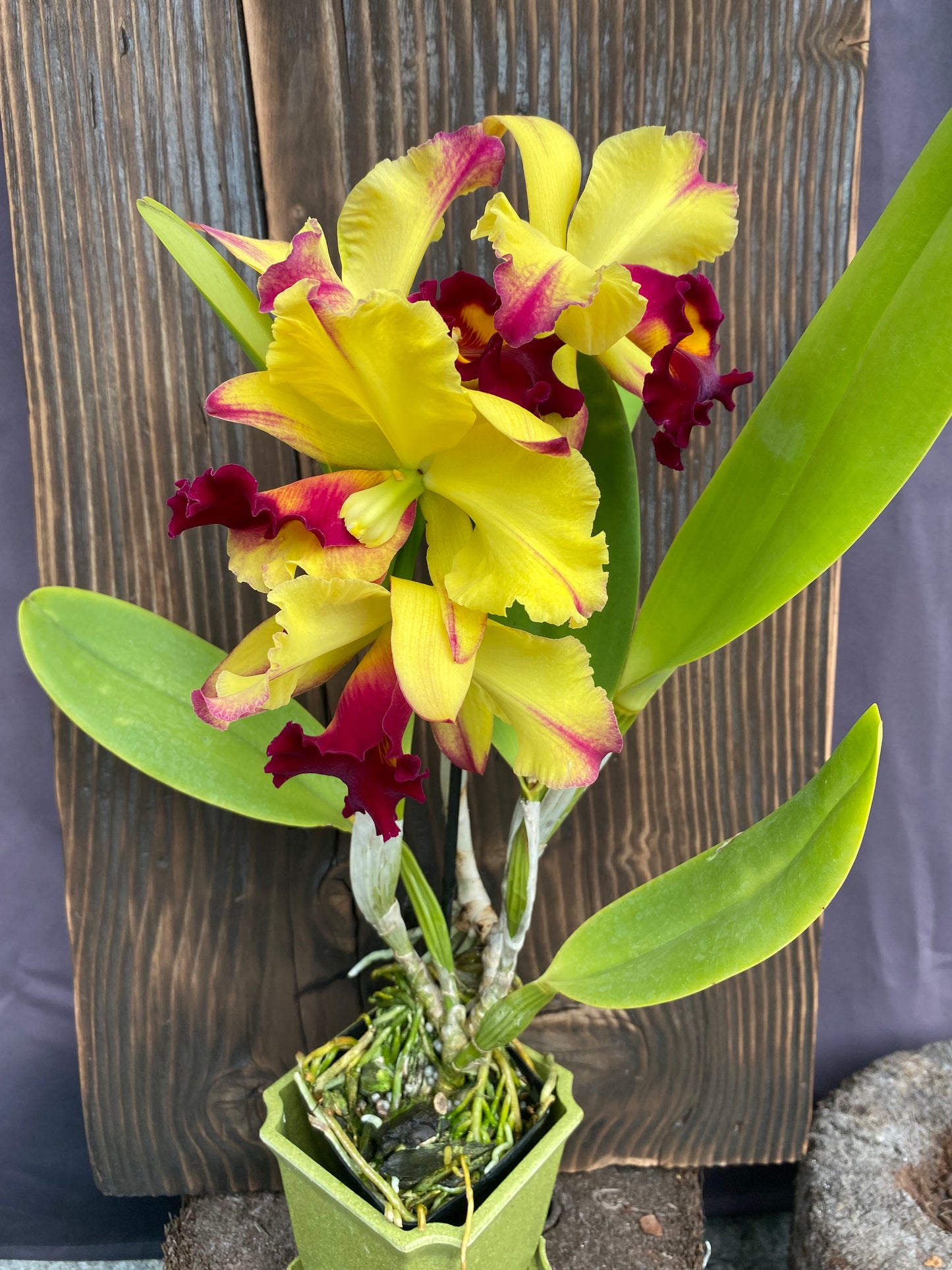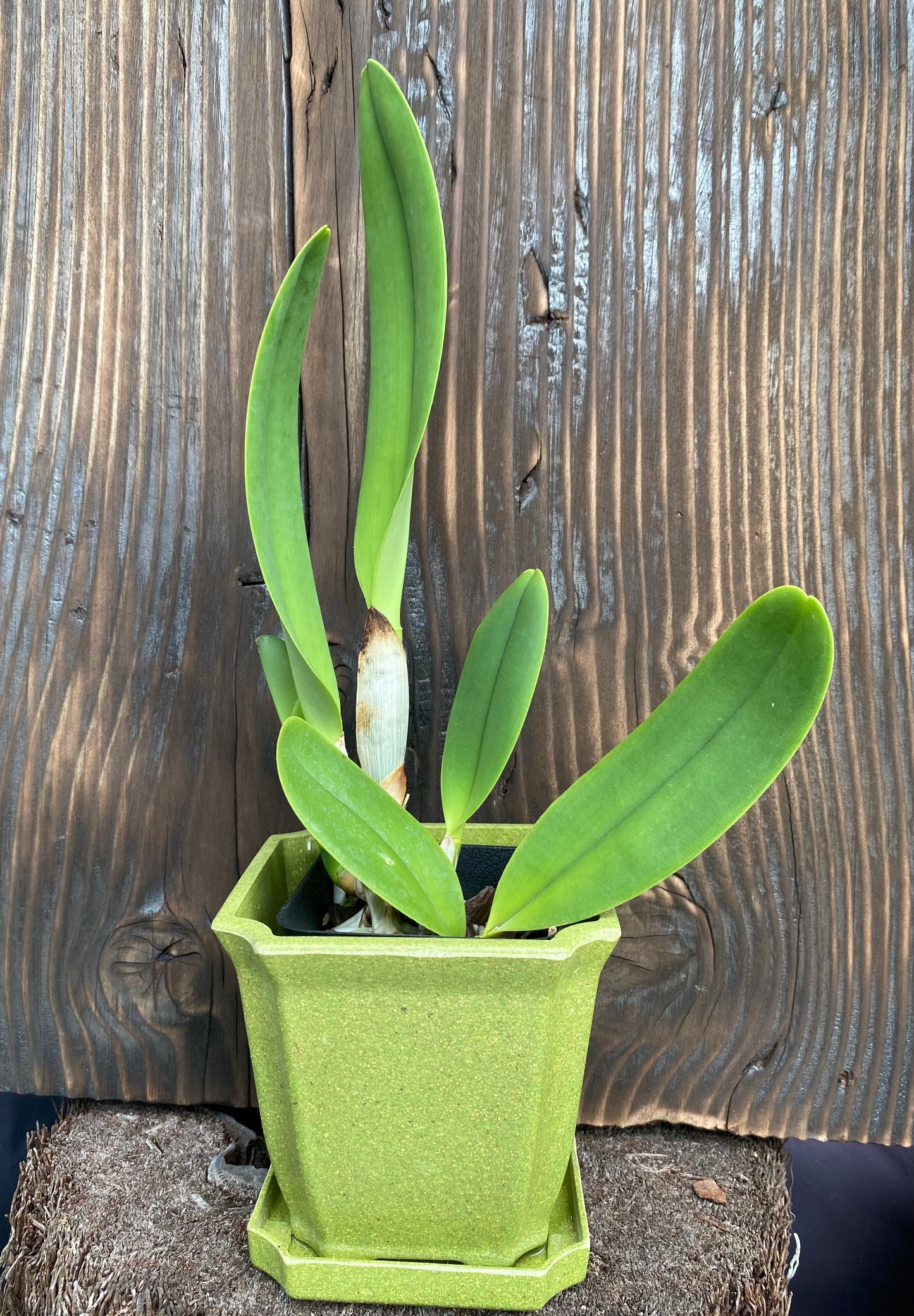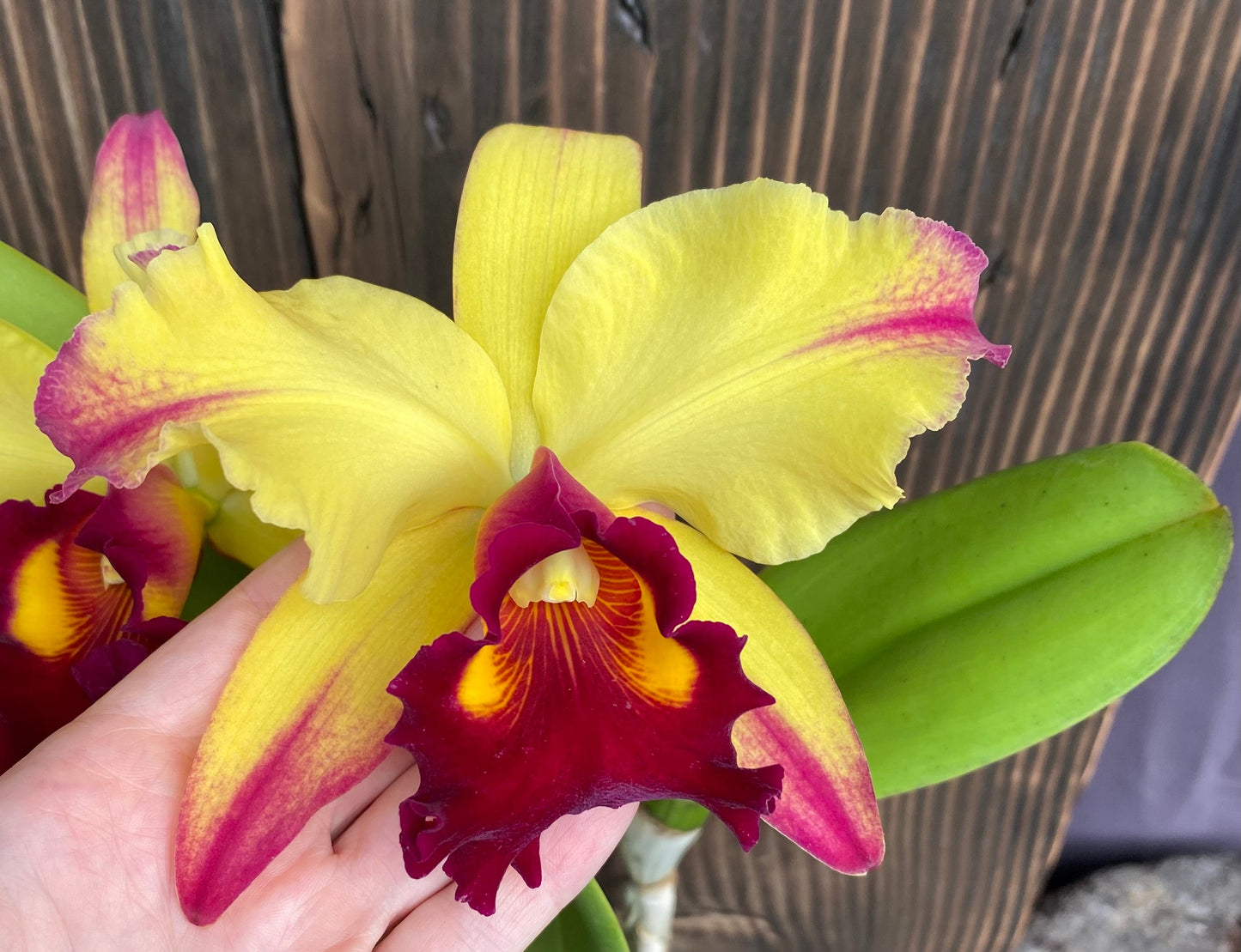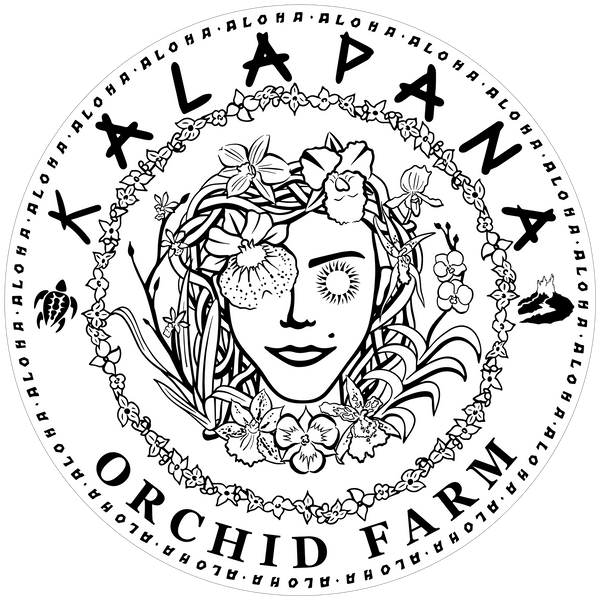Kalapana Orchid Farm
Blc. Dora Louise Capan 'Lea'
Blc. Dora Louise Capan 'Lea'
Couldn't load pickup availability
Behold a fascinating cattleya cross with a very rich family tree: Blc. Dora Louise Capan 'Lea.'
The union of Cattleya Moscombe and Rhyncholaeliocattleya Toshie Aoki, blends classic elegance with modern, vibrant color. Let's delve into its prestigious parentage to understand what makes Blc. Dora Louise Capan 'Lea' so special. It's like orchid matchmaking, and this pairing is a powerhouse!
First, let's look at the grand dame of the duo, Cattleya Moscombe. This is an old-time hybrid, registered way back in 1913. It’s a cross between Cattleya Princess Royal and Cattleya schroederae.
Cattleya schroederae is a wonderful species from the mountains of eastern Colombia, where it grows at elevations between 1,600 and 2,600 ft. It's known for its incredibly fragrant, delicate flowers that bloom in shades of pale rose, blush pink, and sometimes pure white, with a golden-yellow throat. It's often called the "Easter Orchid" because its blooming season typically coincides with the holiday in the Northern Hemisphere. It brings a legacy of graceful form and a sweet, captivating scent to the mix.
Cattleya Princess Royal, the other parent, is itself a primary hybrid between two titans of the Cattleya world: the Colombian Cattleya warscewiczii and the Brazilian Cattleya tenebrosa. C. warscewiczii is famous for its massive, showy flowers, while C. tenebrosa contributes bronze and copper tones and a distinctively shaped lip.
So, from C. Moscombe, we can expect a genetic foundation for large, well-shaped, and fragrant flowers.
Now, let's bring in the splash and sizzle: Rhyncholaeliocattleya Toshie Aoki. This is a celebrated modern hybrid, an icon from the 1980s that continues to win awards. It's the result of crossing Rlc. Faye Miyamoto and Rlc. Waianae Flare. Its own family tree is a complex tapestry woven from species like the golden Cattleya dowiana from Costa Rica and Colombia, the vibrant Brazilian Cattleya purpurata, and, significantly, the Mexican Rhyncholaelia digbyana. It is this Rhynchoslaelia ancestor that often imparts a fabulous, fringed lip and a bright, citrusy fragrance to its descendants. Rlc. Toshie Aoki is legendary for its brilliant yellow flowers, often dramatically flared with red on the petals and a bold, contrasting red lip.
The cross of C. Moscombe with Rlc. Toshie Aoki creates a symphony of traits. The offspring produce large, robust flowers thanks to the influence from both sides. The color palette can be wonderfully unpredictable. The classic, full shape from C. Moscombe provides a beautiful canvas for the dramatic flaring and bold lip color from Rlc. Toshie Aoki. From our example here, we see art-shade blooms in vibrant yellows overlaid with magenta flares and a gorgeous ruby lip. With both C. schroederae and R. digbyana in the background, a delightful and complex fragrance is almost a guarantee.
The plant itself is a standard-sized Cattleya, with strong, oblong leaves atop stout pseudobulbs, reaching a height of about 15-20 inches. It will likely be a vigorous grower, typically blooming in the spring or fall, producing a truss of several waxy, long-lasting flowers.
Care Instructions
Light: Provide bright, indirect light. An east-facing window with morning sun is excellent. Leaves should be a firm, light olive-green. Too much direct sun will scorch the leaves, while too little will prevent blooming.
Water: Water thoroughly, allowing the potting medium to become almost completely dry before watering again. This is typically every 7 to 10 days. Ensure excellent drainage.
Temperature: Ideal daytime temperatures are between 70-85°F, with a drop at night to 60-65°F. This diurnal temperature fluctuation is important for initiating flower spikes.
Humidity: Prefers humidity levels between 50% and 70%. Placing the plant on a tray of moist pebbles or using a humidifier can help maintain this level.
Potting Medium: An open, airy, coarse-grade orchid mix is essential for healthy roots. A blend of fir bark, charcoal, and perlite works well. Repot every two to three years, or when the mix begins to decompose and retain too much water.
*Flower photos are examples of a mature plant, approximately one year older than our current stock of blooming-size plants, beautifully grown in 4" pots (no buds or spikes).
Share










